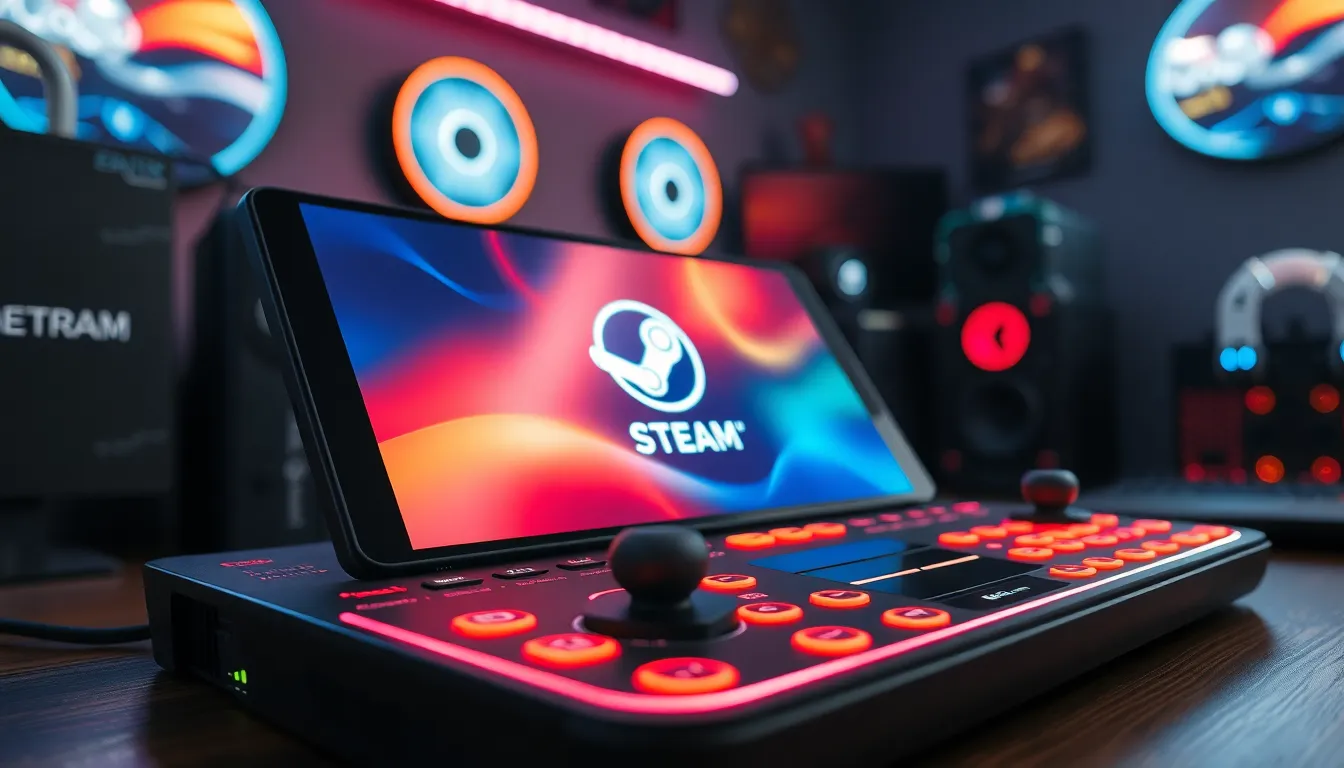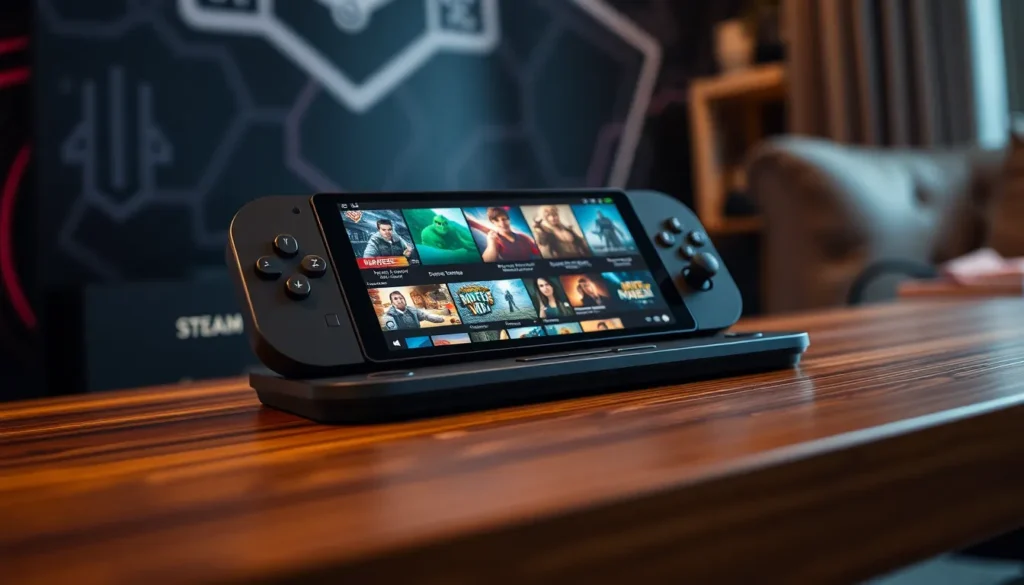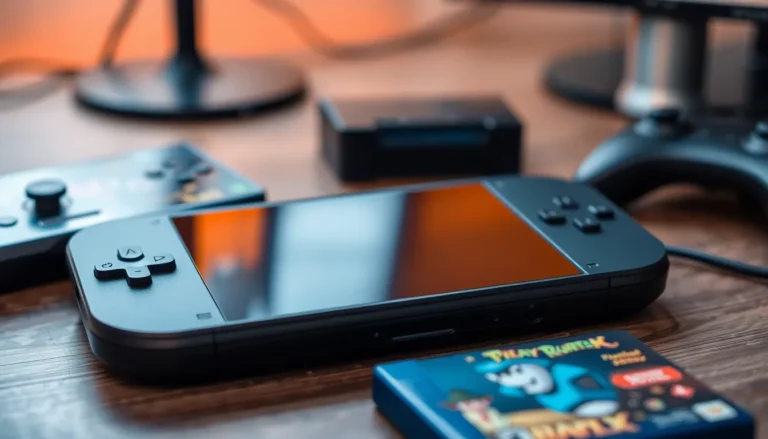Table of Contents
ToggleThe Steam Deck has taken the gaming world by storm, offering a portable solution for playing PC games on the go. One of the key components that determine its performance is the RAM. Understanding how RAM impacts gameplay can help users maximize their gaming experience.
With the Steam Deck’s unique architecture, the amount and speed of RAM play crucial roles in multitasking and overall performance. Gamers need to know how different RAM configurations can affect game loading times, frame rates, and even battery life. As the demand for high-performance gaming continues to rise, exploring the intricacies of Steam Deck RAM becomes essential for both casual and hardcore gamers alike.
Overview of Steam Deck RAM
Steam Deck features 16 GB of LPDDR5 RAM, designed to enhance gaming performance in a portable format. This amount of RAM supports smooth multitasking and allows users to run multiple applications concurrently without degradation in performance.
RAM speed plays a crucial role in data transfer rates and overall efficiency. The LPDDR5 modules operate at speeds up to 5500 MT/s, providing faster data access compared to older RAM types. This speed contributes to quicker game loading times and improved frame rates during gameplay.
Understanding RAM configurations is essential for gamers. The 16 GB capacity ensures that even demanding titles run effectively, addressing concerns for both casual players and enthusiasts. Optimized RAM usage helps extend battery life, which is vital for mobile gaming.
The RAM in Steam Deck is soldered onto the motherboard, making upgrades impossible. Users should consider this when selecting their device’s storage options, as adding more RAM isn’t feasible. Proper RAM management can significantly impact the gaming experience, emphasizing the importance of users optimizing settings for their preferences.
Importance of RAM in Gaming Devices

RAM plays a crucial role in determining the performance of gaming devices like the Steam Deck. Its capacity and speed significantly affect gameplay quality, affecting factors such as loading times and overall experience.
Performance Impact
Higher RAM capacity leads to improved performance. With 16 GB of LPDDR5 RAM, the Steam Deck enhances loading times and provides stable frame rates. Games require more memory for complex graphics and processes. As RAM speed reaches up to 5500 MT/s, data transfers occur more quickly, ensuring fluid gameplay even in demanding titles. Gamers experience less lag and reduced stutter, essential for immersive gaming sessions.
Multitasking Capabilities
RAM’s role in multitasking can’t be overlooked. The Steam Deck supports smooth operation of multiple applications simultaneously. Users can switch between games, streaming services, and chat applications without interruptions. This capability allows for a seamless transition during gameplay, enhancing user experience. A sufficient amount of RAM ensures that background applications don’t hinder gaming performance, catering to both casual and serious gamers alike.
Technical Specifications of Steam Deck RAM
Steam Deck features high-performance RAM to enhance gaming encounters. The choice of RAM type and its speed significantly impacts overall device performance for gaming and multitasking.
RAM Type and Speed
Steam Deck utilizes 16 GB of LPDDR5 RAM, renowned for its speed and efficiency. LPDDR5 technology operates at speeds up to 5500 MT/s, delivering faster data transfer rates than its predecessors. Higher bandwidth translates to quicker game loading and improved frame rates, essential for maintaining smooth gameplay. Low Power Double Data Rate (LPDDR) RAM also optimizes energy consumption, crucial for battery life during extended gaming sessions.
Capacity Comparison
The 16 GB RAM capacity stands out against competitors in the portable gaming market. Many handheld devices offer 8 GB or less, which can hinder multitasking and performance in resource-heavy games. In contrast, 16 GB ensures ample memory for demanding titles, significantly reducing lag and stutter. For gamers engaging in multitasking, such as streaming or using chat applications alongside gaming, this capacity provides a seamless experience and supports multiple operations without sacrificing performance.
User Reviews and Experiences
Users frequently highlight their experiences with the Steam Deck’s RAM, noting its impact on performance and gameplay. Feedback ranges from enthusiastic praise to constructive criticism.
Positive Feedback
Many users appreciate the 16 GB LPDDR5 RAM, which enhances multitasking capabilities. Gamers report smooth transitions when switching between resource-heavy applications, such as streaming or voice chat tools. Users also commend rapid loading times for both games and system applications. Reviews often cite how the high-speed RAM minimizes lag during intense gaming moments, allowing for a fluid experience without interruptions. Overall, the combination of ample capacity and speed receives high marks from the gaming community.
Common Issues
Some users encounter limitations due to the soldered RAM. This design prevents future upgrades, leading to concerns about performance longevity as games evolve. A few players notice that certain demanding titles can occasionally stutter, especially during graphically intense scenes. Battery life also remains a topic of discussion, with some users wanting improvements to accommodate extended play sessions. Despite these issues, most find the RAM performance satisfactory for the intended use, but some express a desire for potential alternatives in future versions.
Future of Steam Deck RAM Upgrades
Future developments in Steam Deck RAM upgrades focus on potential enhancements in performance and user experience. Current hardware limitations, particularly the soldered RAM, prevent physical upgrades. However, innovations in RAM technology may emerge, influencing the future designs of similar devices.
Advancements in RAM speed, capacity, and efficiency promise to improve gaming experiences. If the next generation of portable gaming devices features removable RAM or expandable options, gamers would gain the ability to customize their systems significantly. Higher capacities, such as 32 GB LPDDR5, could become standard, enhancing multi-threading capabilities and reducing lag in demanding titles.
Developers bear in mind the critical role of RAM when designing games. As gaming requirements grow, optimizing RAM management through software updates may extend the lifespan of existing devices like the Steam Deck. These updates might optimize memory usage, addressing existing performance concerns during high-intensity gaming sessions.
Growing interest in gaming features like cloud gaming introduces opportunities for RAM improvements. As streaming games from the cloud typically require less local processing power, alterations in memory requirements could lead to different approaches in future designs. Should increased cloud gaming adoption occur, manufacturers may explore hybrid models that balance local and remote resources effectively.
Ongoing user feedback plays a crucial role in shaping future products. Developers can collect insights regarding performance, battery life, and multitasking capabilities, influencing the design of future hardware iterations. Engaging with community suggestions may lead to a more competitive edge as the gaming landscape continues to evolve.
The Steam Deck’s RAM is a pivotal element in delivering a robust gaming experience. With 16 GB of LPDDR5 RAM, it provides the necessary bandwidth for multitasking and enhances overall performance. Users can enjoy smooth gameplay and quick loading times even in demanding titles.
While the soldered RAM limits upgrade options, its current configuration meets the needs of both casual and dedicated gamers. As technology evolves, future devices may offer more flexibility in RAM upgrades, potentially addressing current limitations.
Ongoing advancements in RAM technology and user feedback will shape the next generation of portable gaming devices, ensuring that performance continues to improve in line with gamers’ expectations.





